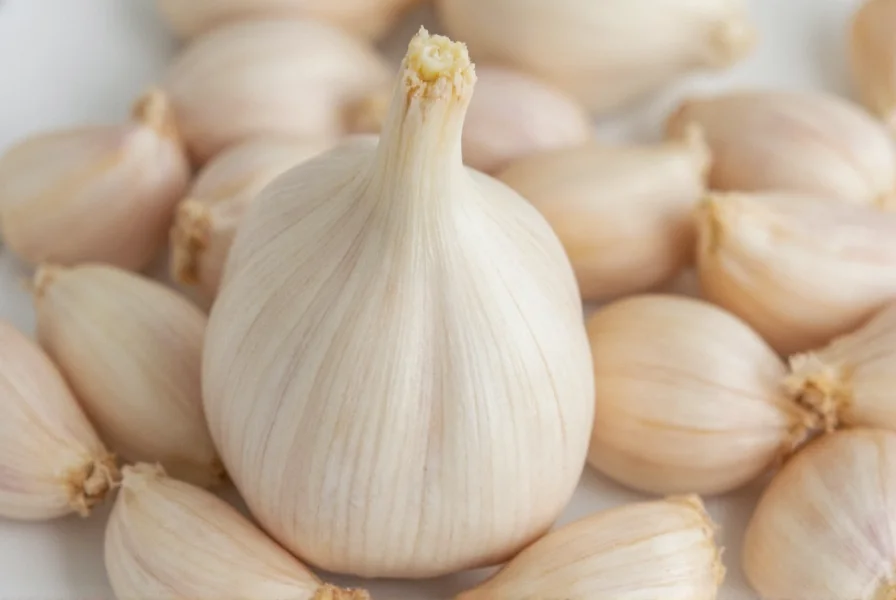Converting garlic cloves to teaspoon measurements is essential for recipe precision and consistent flavor development. Whether you're following a family recipe that calls for cloves or using a modern recipe specifying teaspoons of minced garlic, knowing these conversions prevents culinary mishaps and ensures your dishes turn out perfectly every time.
Understanding Garlic Clove to Teaspoon Conversions
Garlic measurements can be confusing when recipes use different units. The conversion from whole cloves to teaspoon measurements depends primarily on two factors: the size of the garlic clove and your preparation method. Fresh garlic cloves vary significantly in size, which directly impacts the volume of minced or chopped garlic they produce.

Garlic Measurement Chart
| Garlic Form | Small Clove | Medium Clove | Large Clove |
|---|---|---|---|
| Whole Clove | 0.5" diameter | 0.75" diameter | 1"+ diameter |
| Minced Garlic | 1/4 teaspoon | 1/2 teaspoon | 1 teaspoon |
| Chopped Garlic | 1/3 teaspoon | 2/3 teaspoon | 1 1/4 teaspoons |
| Garlic Paste | 1/4 teaspoon | 1/2 teaspoon | 1 teaspoon |
Factors Affecting Garlic Measurements
Several variables influence the precise conversion from clove to teaspoon measurements. The variety of garlic significantly impacts size—softneck garlic typically produces smaller cloves than hardneck varieties. Growing conditions, soil quality, and harvest timing also affect clove dimensions.
Preparation technique plays a crucial role in measurement accuracy. How finely you mince the garlic affects volume—tightly packed minced garlic yields less volume than loosely chopped pieces. The moisture content of fresh garlic varies seasonally, with newly harvested garlic containing more water than cured bulbs.
Practical Cooking Applications
When substituting measurements in recipes, consider the dish's flavor profile. Delicate sauces benefit from the milder flavor of finely minced garlic, while rustic dishes can handle coarsely chopped pieces. For consistent results in meal preparation, many professional chefs recommend using a kitchen scale—one medium garlic clove weighs approximately 3-7 grams.
Understanding garlic clove to teaspoon conversion for cooking becomes especially important when scaling recipes. When doubling a recipe that calls for 3 cloves of garlic, using 1.5 teaspoons of minced garlic maintains the proper flavor balance rather than simply doubling the physical cloves, which might vary in size.
Common Measurement Mistakes to Avoid
Cooks frequently make errors when converting between whole cloves and teaspoon measurements. One common mistake is using jarred minced garlic without adjusting for its higher moisture content and preservatives, which alter flavor intensity. Another error involves not accounting for garlic age—older bulbs dry out, yielding less volume when minced.
When recipes specify "garlic, to taste," understanding the garlic measurement chart for cooking helps you make informed adjustments. Start with the standard conversion, then taste and adjust as needed based on your garlic's potency and personal preference.
Substituting Garlic Forms
Knowing how much minced garlic equals one clove allows for seamless substitution between fresh and preserved forms. One medium garlic clove generally equals:
- 1/2 teaspoon freshly minced garlic
- 1/8 teaspoon garlic powder
- 1/2 teaspoon garlic paste
- 1/2 teaspoon jarred minced garlic (adjust to taste)
When substituting garlic powder for fresh, remember it's more concentrated—use 1/8 teaspoon powder per medium clove. For roasted garlic, one large roasted clove yields approximately 1 1/2 teaspoons of soft, caramelized garlic.










 浙公网安备
33010002000092号
浙公网安备
33010002000092号 浙B2-20120091-4
浙B2-20120091-4